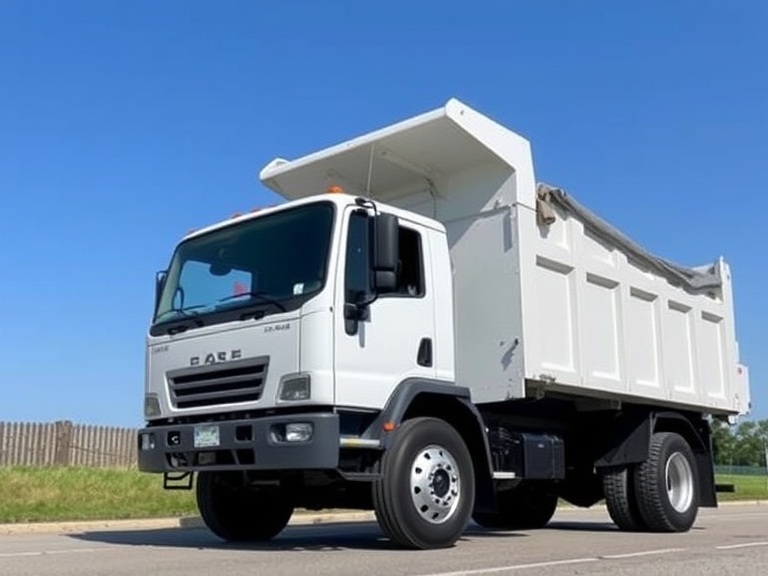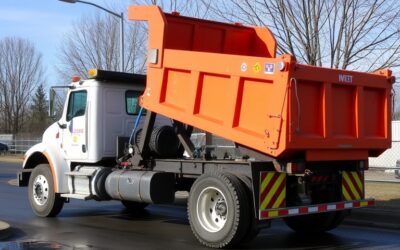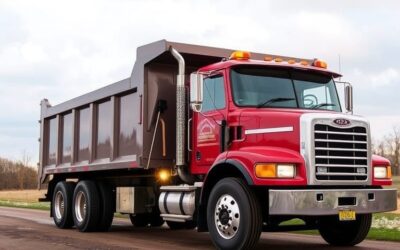Dump trucks are the backbone of construction, mining, and waste management. But their size and loads make stability a critical challenge. Without proper measures, they risk tipping over—jeopardizing safety and operations. Discover how simple tips and Wink Anti-Tip technology can keep your trucks stable and secure. But with this responsibility comes the need to ensure these trucks remain stable and safe. Without proper measures, dump trucks can become dangerous, risking tipping over during operations.
Understanding Dump Truck Stability Issues
Dump trucks excel at transporting heavy materials, but stability can be a challenge. The key lies in managing weight distribution, terrain, and road conditions. Stability issues often arise from weight distribution and terrain conditions. Imbalanced loads shift the truck’s center of gravity, increasing the risk of tipping during turns or abrupt stops. The balance of the load directly affects the vehicle’s center of gravity, making careful loading crucial.
Steep or uneven terrain shifts weight unpredictably, making careful handling crucial. When a truck travels across sloped terrain, gravity can shift the weight in unexpected ways. Drivers need to be aware of these conditions and adjust their speed and handling to maintain control. High winds can also impact stability, pushing against the truck’s sides and affecting its balance.
Moreover, High winds, potholes, and loose gravel amplify tipping risks by destabilizing trucks. Each bump can jolt the truck, potentially shifting the cargo and creating an unstable situation.
Trucks must be equipped to handle variations in their environment. Drivers play a vital role in monitoring these factors and using their skills to keep everything steady. Understanding these challenges helps frame the need for proper techniques and technological aids to ensure safety on the road.
Proper Loading and Unloading Techniques
Correctly loading and unloading dump trucks is essential for maintaining stability. By adhering to several best practices, drivers can minimize risks and ensure their vehicles remain balanced.
1. Even Load Distribution: Distribute loads evenly, keeping heavier items at the center to lower the center of gravity and maintain balance. Start by placing heavier items at the center. This helps maintain a low center of gravity and improves balance.
2. Know Your Load Limit: Secure cargo with straps or nets to prevent shifting, which could destabilize the truck during transit. Overloading significantly increases the risk of tipping, as it creates excessive pressure on the suspension and tires.
3. Secure the Cargo: Use appropriate straps or netting to keep loose items from shifting while in transit. This prevents sudden movements within the truck bed that could destabilize the truck.
4. Choose Safe Unloading Areas: Unload on level ground to reduce weight shifts that can tip the truck during tilting. Avoid sloped areas where the weight shift during unloading could tip the truck.
5. Unload Evenly: Gradually unload evenly to keep the truck stable, avoiding abrupt weight shifts, rather than dumping it all at once from one section. This helps ensure the truck remains balanced.
Adopting these techniques reduces the chances of tipping incidents. Properly loading and unloading your truck not only ensures a smoother operation but also protects the driver and enhances safety overall.
Regular Maintenance Checks for Safety
Routine maintenance is essential for preventing tipping risks and ensuring truck stability. By focusing on key areas, drivers can prevent stability issues that lead to accidents. Tires are the first line of defense. Keep tires inflated to the correct pressure and maintain tread depth for better traction on all surfaces., especially on slippery or uneven surfaces. Underinflated tires can create instability and increase the risk of tipping.
Brakes are also vital. Inspect and replace worn brakes regularly to ensure quick stops, reducing tipping risks, especially when carrying heavy loads. Any delay in braking due to worn-out parts can lead to uncontrolled tipping situations. Regularly check and replace brake pads or fluids to keep the system functioning well.
Inspect suspension components for wear or leaks, ensuring they can handle heavy loads and rough terrain. Regular inspections help ensure the suspension is in good condition, preventing it from sagging or failing under heavy loads. Look for worn-out springs or leaking shock absorbers.
Routine checks help spot potential problems before they become serious, which is crucial for safety in trucking operations. Preventive maintenance not only extends the life of the truck but also ensures the safety of the driver and others on the road.
Leveraging Technology for Enhanced Stability
Technology plays an important role in enhancing dump truck stability. One effective tool is the Wink Anti-Tip kit, which helps keep trucks stable by using advanced technology. Wink Anti-Tip kits use sensors to monitor tilt and load balance in real time, detecting instability early. The sensors continuously monitor the truck’s angle and movement, providing real-time data to alert drivers about potential problems.
Automatic systems in these kits add an extra layer of safety. Automatic systems lower the truck’s center of gravity instantly when instability is detected, restoring balance, such as lowering the center of gravity to stabilize the vehicle. This proactive approach can significantly reduce the chances of accidents.
Driver alerts provide real-time feedback, enabling quick adjustments to avoid accidents. These alerts help drivers make necessary adjustments, improving their response time to situational changes. The use of technology assists both new and experienced drivers in maintaining control, even in challenging conditions.
Conclusion
Dump truck stability is a non-negotiable requirement for safe, efficient operations. By combining proper loading, regular maintenance, and Wink Anti-Tip’s advanced technology, you can reduce tipping risks and ensure smoother operations. Equip your fleet with Wink Anti-Tip today to experience the difference in safety and stability. Proper loading techniques, regular maintenance checks, and the application of advanced technology all play crucial roles in keeping trucks stable. Incorporating technology like the Wink Anti-Tip kit further enhances stability measures. By using technology that includes real-time monitoring and automated responses, drivers can maintain control over their vehicles, ensuring their safety as well as the safety of others on the road.
Wink Anti-Tip provides the essential tools necessary for dump truck safety and stability. To learn more about how we can help maintain stability for your fleet, visit our website and see the difference our technology can make!





